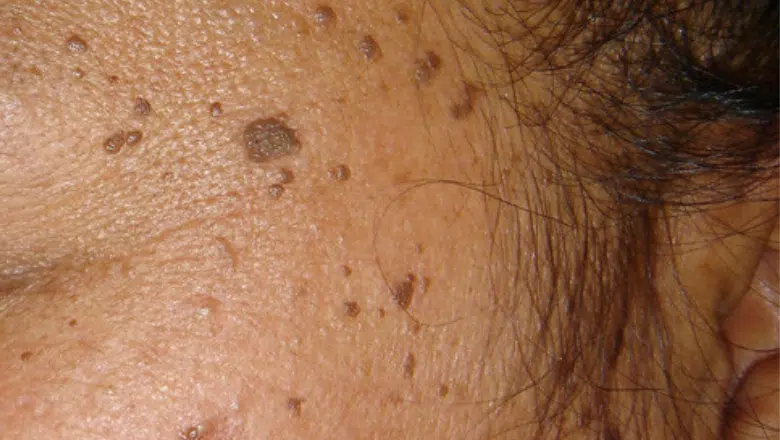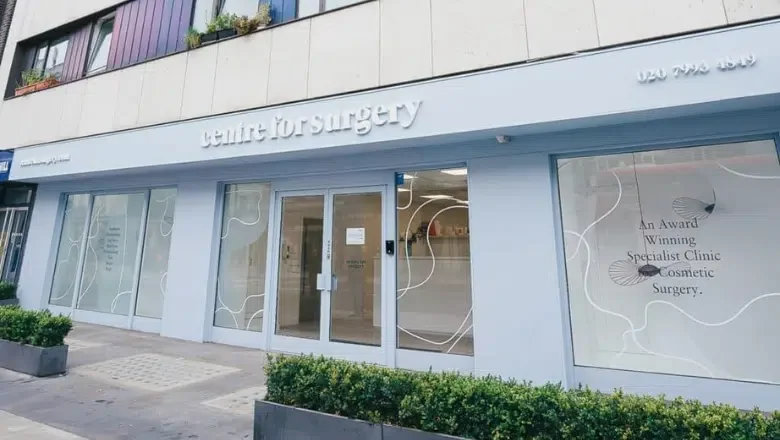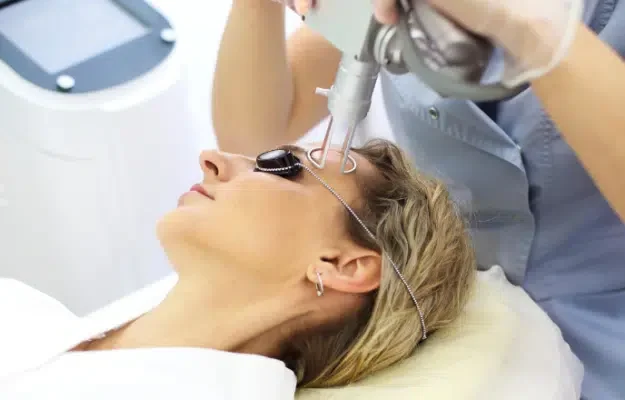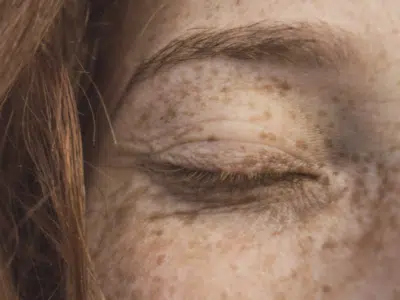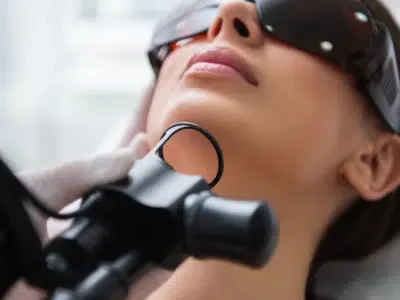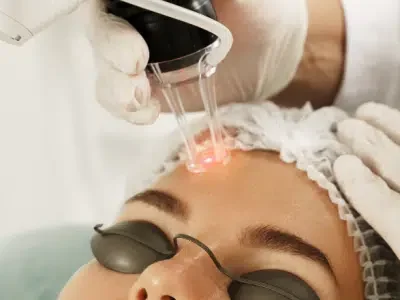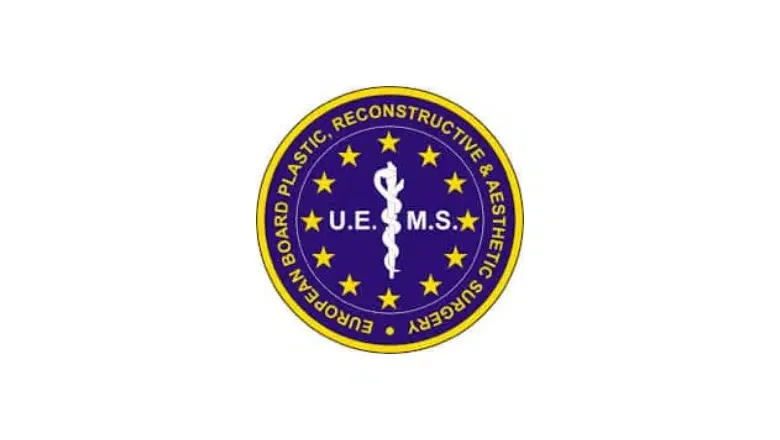Dermatosis Papulosa Nigra (DPN) Treatment in London With Laser
Dermatosis papulosa nigra is a prevalent skin condition characterised by the appearance of small, dark-coloured growths. These growths, which can be black or brown, typically emerge on the upper regions of the body, including the face, neck, and upper torso. At our Baker Street clinic located in Marylebone, we are proud to offer dermatosis papulosa nigra removal using erbium laser technology. This method has proven to be highly effective in treating this condition, providing our patients with clearer, smoother skin. We invite you to book a consultation today to discover more about how our specialised treatment can assist in addressing your skin concerns.
What is Dermatosis Papulosa Nigra?
Dermatosis papulosa nigra (DPN) is a benign, yet highly visible skin condition that manifests as small, dark lesions. These typically start appearing in adolescence and tend to increase in both size and number as one grows older. DPN primarily affects individuals with darker skin tones, particularly those of Black African, Asian, and mixed heritage backgrounds. This skin condition is most commonly observed among individuals with Fitzpatrick skin types 4 to 6.
The distinctive lesions of DPN can vary in appearance from flat to slightly or noticeably raised and are usually black or dark brown in colour. Typically, each lesion measures between 1-5mm in diameter. While these spots are most frequently found on the cheekbones, temples, and around the eyes, they can also appear on other facial areas as well as on the neck, chest, and back. It is noted that areas of the skin that are more frequently exposed to sunlight are more prone to develop these lesions, suggesting a possible link between sun exposure and the proliferation of DPN.
Although dermatosis papulosa nigra does not pose any medical risks, the presence of these dark spots or bumps can be cosmetically unappealing and may affect the self-esteem of those who have them. Recognising the cosmetic concern it presents, Centre for Surgery offers an innovative solution to this skin issue. We are proud to be one of the few clinics in the UK that provide advanced treatment using erbium YAG laser technology. This sophisticated treatment is not only effective but also minimally invasive, offering a safe and efficient method to significantly improve the appearance of DPN.
By opting for this state-of-the-art erbium YAG laser treatment, patients can expect a noticeable reduction in the visibility of these lesions, resulting in clearer, more uniform skin. Our experienced specialists are dedicated to delivering personalised care and are equipped to handle all aspects of DPN treatment, ensuring optimal results for each individual. We invite anyone dealing with dermatosis papulosa nigra to schedule a consultation at our clinic to learn more about how our advanced treatments can help achieve a smoother, more aesthetically pleasing skin appearance.
What Causes Dermatosis Papulosa Nigra?
The root cause of dermatosis papulosa nigra (DPN) remains somewhat elusive, although it is clear that genetics play a significant role. About half of the individuals who develop DPN report having a family member, such as a parent or grandparent, who also had the condition, suggesting a strong hereditary link. Despite the genetic associations, external factors like sun exposure are also believed to influence the development of DPN.
Regular exposure to UV light from natural sunlight or artificial sources like sunbeds is suspected to stimulate an overproduction of epidermal cells. This is particularly noteworthy as there is a common misconception that individuals with darker skin, who typically fall into higher Fitzpatrick skin type categories, do not need sun protection since their skin is less prone to burning. However, this lack of protection can lead to cell overgrowth, contributing significantly to the formation of the characteristic hyperpigmented papules seen in DPN.
DPN often first appears during adolescence, though the teenage years themselves do not trigger the condition. As people age, they may find that these lesions become more frequent and prominent, possibly due to cumulative sun exposure or ongoing friction on the skin. Over time, the lesions can become rougher and may develop small flaps, much like those seen on skin tags, further affecting their appearance.
What other skin lesions are similar to DPN?
Several skin lesions can appear similar to Dermatosis Papulosa Nigra (DPN), especially in terms of size, colour, and the general appearance on the skin. Here are a few conditions that might be mistaken for DPN:
These benign skin growths range in colour from light tan to black and have a waxy, scaly, slightly elevated appearance. They are very common in older individuals.
Small, soft, skin-coloured growths often hang off the skin on a small stalk. They are typically found in areas where the skin folds, like the neck, armpits, and groin.
Moles can be flat or raised and vary in colour from pink to dark brown or black. They are generally round or oval and can appear anywhere on the body.
Melanocytic Naevus
These are typically benign moles made up of melanocytes, the skin’s pigment-producing cells. Some can be present at birth (congenital melanocytic neavi), while others appear during childhood or adulthood.
Freckles (Ephelides)
Small, flat, brown marks on the skin result from an accumulation of melanin. They typically affect people with fair skin and are commonly enhanced by sun exposure.
Like freckles, lentigines or age spots are flat, brown spots that are more persistent and do not fluctuate with sun exposure. They are common in older adults, especially in sun-exposed areas.
Molluscum Contagiosum
Caused by a viral infection, these are small, pearly, dome-shaped lesions that often have a central dimple. While they can appear anywhere on the body, they are most common in children and are contagious.
Dermatosis Papulosa Nigra Removal Process
Dermatosis papulosa nigra (DPN) is a widespread, benign skin condition that is medically harmless and does not necessitate treatment for health reasons. However, for many individuals, the appearance of DPN can significantly impact their confidence and self-esteem. For those seeking to enhance the aesthetic appearance of their skin, cosmetic interventions can offer a valuable solution.
At our Baker Street clinic, we are pleased to provide an advanced cosmetic treatment using the erbium YAG laser, a leading technology renowned for its effectiveness in improving the appearance of DPN. This treatment employs a surgical-grade laser that precisely targets and ablates raised lesions without the need for cuts, thereby avoiding the scars associated with traditional surgical methods.
Our skilled practitioners, who are extensively trained in laser treatments, customise the use of the erbium laser to suit individual skin types. The laser operates by vaporising skin lesions with high precision, ensuring that only the targeted areas are affected, and the surrounding healthy skin remains intact.
Following the treatment, the natural healing process of the skin begins. The treated areas may crust over or form a scab, which typically falls off within 7 to 14 days, although it may take slightly longer on the body. It is crucial during this period to avoid picking or scratching at the scabs to prevent any disruption to the healing process and reduce the risk of hypo- or hyperpigmentation developing.
The laser treatment for dermatosis papulosa nigra is designed to be quick and relatively painless. While the procedure may cause a mild stinging sensation, it is generally well-tolerated, and our professionals are available to discuss any concerns and how discomfort can be minimally managed. Depending on the extent of the lesions, multiple sessions may be recommended by our practitioners to achieve optimal results. This treatment approach ensures that each session is effective and tailored to the needs of the individual, with minimal discomfort and no prolonged pain.
Dermatosis Papulosa Nigra Treatment Costs
If you are considering laser treatment for dermatosis papulosa nigra, we at Centre for Surgery are here to assist you every step of the way. We understand that each individual’s skin is unique, which is why we begin with a thorough assessment of your condition followed by essential patch testing. This initial stage is crucial in tailoring a treatment plan that is bespoke to your needs.
After your consultation and patch test, we can schedule your first laser treatment session to take place within 2-3 weeks. The cost of treatment begins at £350 for smaller areas, offering an accessible option for those looking to improve the appearance of their skin. For larger areas requiring treatment, we provide various anaesthesia options to enhance comfort during the procedure, including sedation and inhaled anaesthesia. It is important to note that the choice of anaesthesia can influence the final cost of your treatment.
Why Choose Centre for Surgery?
At Centre for Surgery, we are committed to providing bespoke and expert care in the field of cosmetic surgery. We understand the importance of individual needs and are dedicated to offering tailored solutions that meet the highest standards of safety and effectiveness.
If you are considering a cosmetic procedure or have concerns about your skin, scheduling a consultation with our experienced practitioners is the first step towards addressing your needs. During the consultation, you can expect a thorough assessment of your condition, an explanation of suitable treatment options, and the opportunity to ask any questions you may have.
Our clinic is located at 95-97 Baker Street in London’s Marylebone area, easily accessible by public transport and offering a discreet, professional environment.
To book your consultation today, please visit our website or contact us directly at:
- Phone: 0207 993 4849
- Email: contact@centreforsurgery.com
You can also find more detailed information about our clinic and the treatments we offer by visiting our About Us page.
We look forward to helping you achieve your aesthetic goals with the utmost care and expertise.
FAQs
-
Is DPN dangerous?Dermatosis papulosa nigra (DPN) is not dangerous. It is a benign skin condition that causes small, dark bumps on the skin, primarily affecting individuals with darker skin tones. DPN is purely a cosmetic concern and does not pose any medical risks.
-
Does DPN go away on its own?Dermatosis papulosa nigra (DPN) does not typically go away on its own. The lesions associated with DPN are benign and permanent unless treated. While they do not pose any health risks, they can increase in number and size over time. If their appearance is a concern, treatment options such as laser therapy can be used to reduce or remove the lesions effectively.

